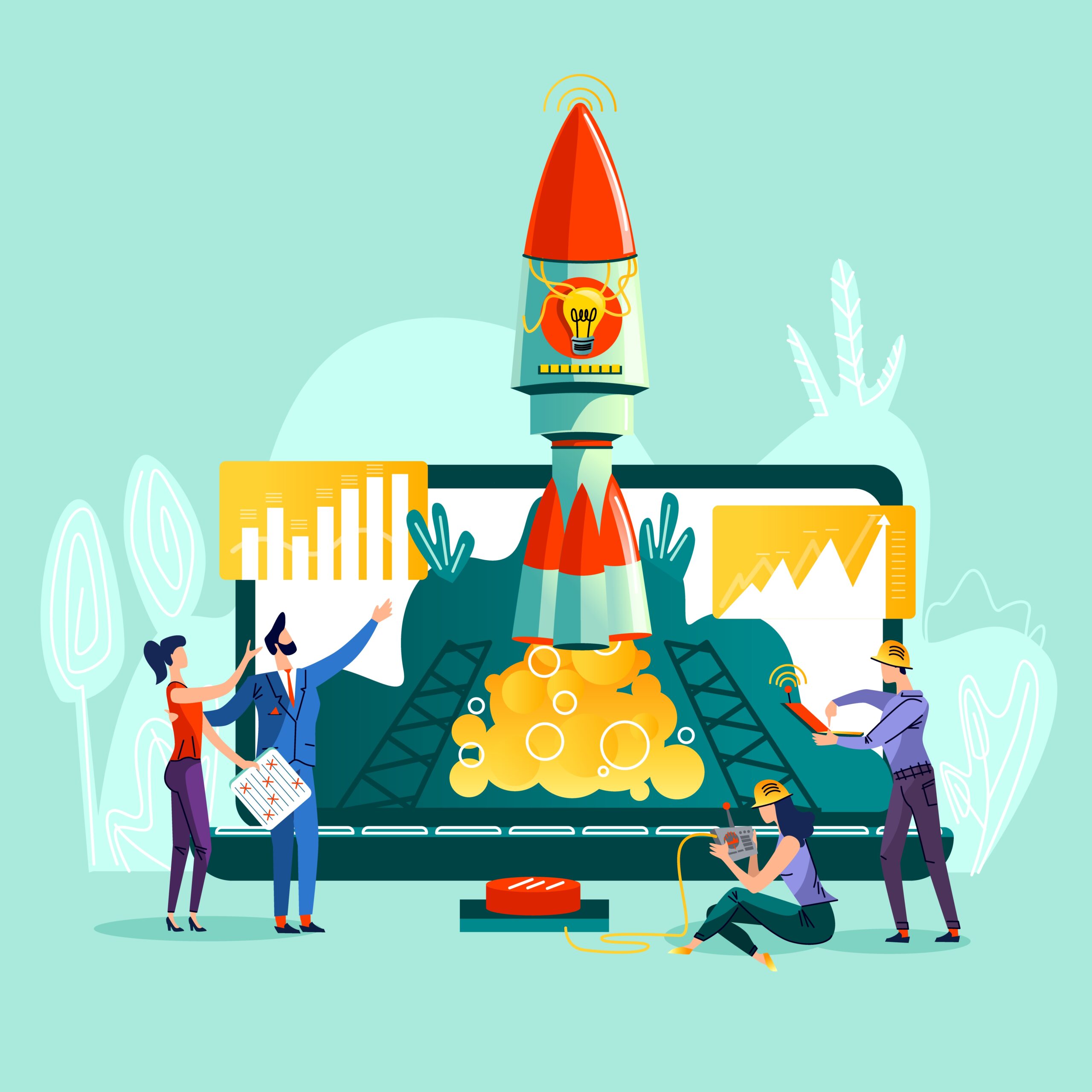In today’s hyper-competitive marketplace, brands constantly seek innovative ways to engage their audiences and inspire lasting loyalty. Traditional marketing tactics are no longer enough to keep customers interested, attention spans are short, and consumer expectations have evolved. This is where gamified marketing strategies emerge as a powerful tool, blending entertainment with engagement to create meaningful and long-term customer relationships.
Gamification transforms mundane interactions into rewarding experiences, making customers feel more connected to brands. From loyalty apps to interactive campaigns, brands are using game mechanics to foster participation, build trust, and encourage repeat engagement.
Understanding Gamification in Marketing
Gamification is the application of game design elements, such as points, challenges, leaderboards, levels, and rewards, in non-gaming contexts to drive user engagement. When integrated into marketing, it motivates consumers to interact with the brand more often and more enthusiastically.
Unlike traditional marketing methods that rely on one-way communication, gamified marketing emphasizes active participation. It gives users a reason to return, complete tasks, and achieve milestones that result in tangible or psychological rewards. The result is a marketing experience that feels like play but functions as a growth engine for the brand.
Popular gamification elements include:
- Points and Badges: Recognizing users for actions like purchases, referrals, or sharing content.
- Levels and Progress Bars: Giving a sense of achievement and progress over time.
- Challenges and Quests: Encouraging users to participate in specific brand activities.
- Leaderboards: Adding competition to enhance motivation.
- Rewards and Incentives: Offering discounts, freebies, or exclusive access for participation.
Why Gamification Drives Brand Loyalty
Gamification isn’t just about entertainment, it’s rooted in psychology. It taps into fundamental human motivators such as achievement, recognition, competition, and belonging. Here’s why it works so effectively for building loyalty:
- Emotional Engagement:
Customers feel emotionally invested when they earn rewards or achieve milestones. This positive emotion becomes associated with the brand itself. - Motivation and Habit Formation:
When customers engage repeatedly with gamified systems, it creates behavioral habits. Over time, this consistent interaction reinforces brand preference. - Social Connection:
Leaderboards, shared achievements, and community challenges encourage users to connect socially, strengthening both peer and brand loyalty. - Personalization:
Many gamified systems use data analytics to personalize experiences, making customers feel recognized and valued. - Sense of Progress:
Progress tracking and tier systems make customers want to continue interacting to “level up,” maintaining engagement over the long term.
Examples of Successful Gamified Marketing Campaigns
Several global brands have effectively used gamification to boost loyalty and engagement. Their success stories demonstrate the power of integrating fun and reward into marketing strategies.
1. Starbucks Rewards Program
Starbucks’ loyalty program is a classic example of gamification done right. Customers earn “stars” for each purchase, which can be redeemed for free drinks or food. As they accumulate stars, they unlock new membership levels with better benefits. The sense of progress and tangible rewards keeps customers returning regularly.
2. Nike Run Club
Nike has successfully merged fitness and gamification through its Nike Run Club app, which tracks performance, sets challenges, and rewards consistency. Users can compete with friends and unlock badges for achievements, which not only promotes Nike products but also builds a global fitness community centered around the brand.
3. McDonald’s Monopoly Campaign
The McDonald’s Monopoly game remains one of the most iconic gamified marketing campaigns. Customers collect virtual Monopoly pieces from food packaging to win prizes. The excitement of collecting, competing, and possibly winning keeps consumers engaged and coming back for more.
4. Duolingo’s Learning Model
While Duolingo is primarily an education app, its approach demonstrates how gamification sustains engagement. With daily streaks, levels, and in-app rewards, users are motivated to return regularly. Brands can adopt similar mechanics to retain customer interest in their loyalty platforms.
5. Sephora’s Beauty Insider Program
Sephora’s loyalty program allows members to earn points for purchases, reviews, and social engagement. Members can redeem rewards or gain access to exclusive products and events. This system has cultivated a strong community of brand advocates and repeat buyers.
Integrating Gamification into Marketing Strategies
Successfully implementing gamification requires more than adding a few points and badges. It must align with brand values, marketing goals, and the customer journey. Here’s how brands can strategically apply gamified marketing to boost loyalty:
1. Define Clear Objectives
Start by identifying what you want to achieve: increased engagement, higher sales, improved retention, or greater social interaction. The gamified elements should support these goals directly. Participating in events like a gamification summit ticket sales effective campaign can also offer real-world insights into how industry leaders use engagement mechanics successfully.
2. Know Your Audience
Understanding your audience’s motivations is key. Are they driven by rewards, competition, or social recognition? Tailor challenges and rewards accordingly to resonate with their preferences.
3. Create Meaningful Rewards
Rewards should provide real value to the customer, discounts, exclusive access, or personalized perks. Symbolic rewards like digital badges can also work if they represent meaningful achievement within the brand’s ecosystem.
4. Encourage Social Sharing
Social integration can exponentially increase brand visibility. Enable users to share achievements or compete with friends, turning engagement into organic promotion.
5. Keep It Simple and Accessible
Gamified experiences should be intuitive. If the rules are too complex or the rewards unclear, users will disengage. The goal is to make interaction effortless and enjoyable.
6. Personalize the Experience
Leverage data analytics to tailor challenges, notifications, and rewards. Personalization enhances emotional connection and increases customer satisfaction.
7. Maintain Freshness
To prevent fatigue, brands should update challenges, introduce seasonal rewards, or add surprise bonuses. Continuous innovation keeps the experience fresh and engaging.
The Role of Technology in Gamified Marketing
Modern technology has made gamification easier and more powerful. Tools like mobile apps, AI analytics, augmented reality (AR), and virtual reality (VR) are transforming how brands deliver immersive experiences.
- Mobile Apps: Provide direct channels for engagement through loyalty programs and push notifications.
- Augmented Reality: Enhances interactivity, as seen in campaigns like Pokémon Go-inspired promotions.
- Artificial Intelligence: Personalizes experiences by analyzing user data and adapting game elements dynamically.
- Blockchain Technology: Ensures transparency in reward systems and allows the use of digital tokens as incentives.
Measuring the Success of Gamified Strategies
To understand whether a gamified marketing campaign is effective, brands should track specific metrics aligned with their goals. Key performance indicators (KPIs) include:
- Engagement Rate: Frequency and duration of customer interactions.
- Retention Rate: The percentage of customers returning to the program.
- Referral Rate: How often users invite others to join.
- Conversion Rate: The increase in purchases or desired actions.
- Customer Lifetime Value (CLV): The long-term value generated through sustained loyalty.
Analyzing these metrics helps refine gamification strategies, ensuring they continue to resonate with audiences.
Challenges in Implementing Gamification
While gamification offers immense potential, it’s not without its challenges. Poor execution can result in frustration rather than engagement.
- Overcomplicated Systems:
If rules or progress tracking are too complex, users lose interest quickly. - Unrealistic Rewards:
Offering unattainable rewards can demotivate users. Balancing effort and reward is crucial. - Short-Term Excitement:
Many gamified campaigns see an initial spike in engagement but fail to sustain it. Long-term strategy and continuous updates are key. - Data Privacy Concerns:
Collecting user data for personalization must comply with privacy laws and maintain user trust. - Brand Misalignment:
Gamified elements that don’t fit the brand’s tone or audience can appear forced or inauthentic.
Future Trends: The Evolution of Gamified Marketing
The future of gamified marketing is evolving rapidly, driven by technology and shifting consumer behavior. Emerging trends include platforms and discussions highlighted by sources like BeforeItsNews, which often explore how digital innovation and user interactivity are shaping brand engagement.
Key trends shaping the future include:
- Metaverse Integration: Virtual worlds will offer new spaces for immersive brand experiences and gamified shopping.
- AI-Driven Personalization: Predictive analytics will create adaptive challenges and dynamic rewards.
- Cross-Platform Loyalty Ecosystems: Unified reward systems across multiple channels and partner brands.
- Sustainability Challenges: Gamified initiatives encouraging eco-friendly actions and corporate responsibility.
- Emotional Gamification: Using emotional triggers to deepen psychological connection and empathy with brands.
As these trends evolve, gamified marketing will become an integral part of every brand’s loyalty strategy, merging engagement, emotion, and technology.
Conclusion
Gamified marketing strategies represent the next frontier in customer engagement and brand loyalty. By combining the mechanics of gaming with the psychology of motivation, brands can transform passive consumers into active participants and loyal advocates. Whether through points, badges, challenges, or personalized experiences, gamification turns everyday interactions into meaningful relationships.
As competition intensifies and consumer expectations rise, brands that embrace gamification not only stay relevant, they build communities of engaged, loyal customers who keep coming back for more. In the digital age, play is no longer just entertainment; it’s the foundation of loyalty.



